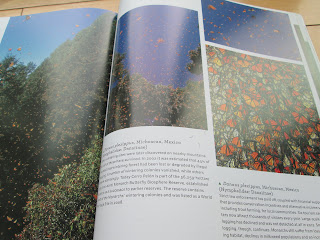“To garden is to foster a bond between
ourselves and the natural world.” Matt Rees-Warren
A garden is a place of joy, wonder and
constant learning. It is a dynamic sanctuary that inspires and elates us; it
kindles a sense of hope and replenishes us. When we garden, we have the opportunity to
create a space in harmony with Mother Nature. As a result of this, the garden
nourishes our bodies and minds, and provides a refuge for meditation and
reflection.
Each day in the garden unfolds like a unique gift
of Mother Nature, sharing the mysteries, intelligence and beauty of her
restorative soul.
At the library I came across Matt Rees-Warren's book: The Ecological
Gardener: how to create beauty and biodiversity from the soil up. I was instantly attracted
to its cover, and once I started reading the book, I could not put it down.
As gardeners we have choices. We can choose to
support our health and the planet’s ecosystems, or we can choose to work
against Mother Nature.
Ecological Gardeners cherish the experience
of cooperating with Mother Nature. We give back to the earth and are
overwhelmed by the rewards we receive in return. As ecological gardeners, we
create a healthy path to a sustainable future, fostering the development of
healthy ecosystems and people.
With extreme weather events becoming more frequent everywhere, ecological gardens are the ones that are prepared to face the challenges with resilience.
The Ecological Gardener offers helpful
suggestions and recommendations to help your garden flourish.
With eloquence and creativity the author
shares information on how ecological gardening makes a difference. He
provides ideas to nourish and protect the soil. He delves into different
methods of composting to help you pick the one that is right for you.
The presence of earthworms in the soil is an
indicator of soil health, and this is the foundation of a healthy garden.
Relevant research has been emerging on the importance of Micorrhizae, the
fungal network that connects the roots of the plants and trees, providing them
with minerals and nutrients while obtaining food from them in return. The symbiosis is crucial to foster sustainable agricultural practices. Regenerating
the soil is essential to agriculture.
Supporting regenerative agriculture is vital
to our present and future.
Take your time to watch this video and share
it with others:
https://www.youtube.com/watch?v=TPkXAi_IKwQ&t=6s
Matt Rees-Warren stresses the need to create a
suitable environment for pollinators, and explains the consequences of their
decline. Pollinators should count on our gardens to find food and shelter.
Gardening without the use of herbicides and pesticides is paramount to a
healthy environment and to our own health.
When we examine the ways through which everything interacts in nature, we are inspired to promote biodiversity instead of fighting against it.
Encouraging the growth of native plants is an
important aspect of gardening.
The author explains how to use water wisely. There is advice on how to harvest
rainwater, and he guides us to improve the management of water in gardens.
Last but not
least, he provides clever ideas and recommendations to reuse and recycle
material.
The photography in The Ecological Gardener captures
the reader’s attention and enhances the understanding of the concepts, ideas
and information on ecological gardening.
Ecological gardening is an adventure of exploration. We can integrate the production of food into this endeavor, promoting health and supporting our communities. Today more than ever, with inflation hitting every country of the world, growing food is not just an option but a necessity.
Community gardens can also be places of
inspiration to a lot of people, and they can provide creative solutions to
various social challenges. Applying basic ecological principles is necessary
and vital to these undertakings. This does not mean that setbacks can’t happen,
but ecological gardening bolsters the life support systems that create
resilience for a sustainable future.
Our gardens
are a full expression of who we are and how connected we are to wildlife and
the environment. We are part of Nature and Nature is part of us. To ignore the
wisdom of this precious relationship is reckless.
The
Ecological Gardener was published by Chelsea Green Publishing.
If you
enjoyed this post, you may also be interested in my writing on the
following books:
I will
publish my next post in two weeks.
My heart is
with the Ukrainian people and with those who are fighting to support them in every way they can. Thank you for everything you do. The
consequences of this horrifying war go beyond the borders of Ukraine.
We hope that
the world learns how dangerous it is to empower an authoritarian man like
Putin, who has no respect for life. Beware of Putin supporters and
apologists.
Till next
time.













.JPG)



